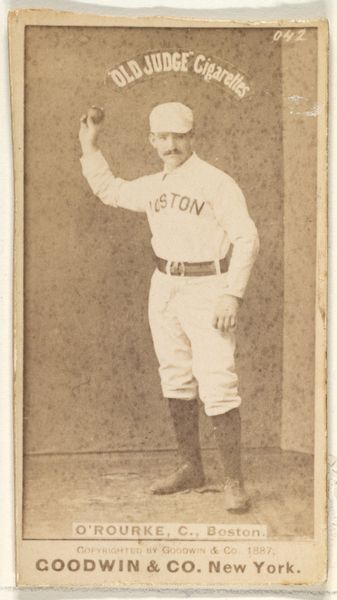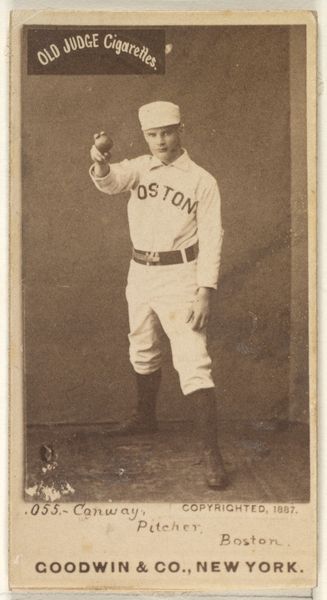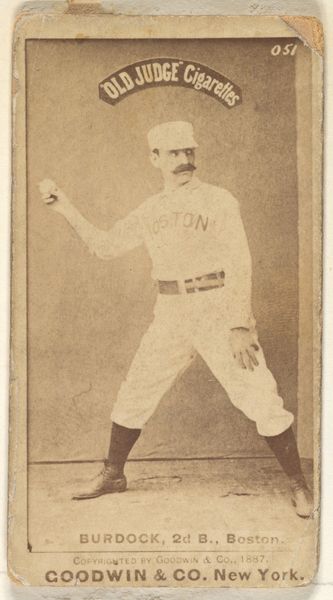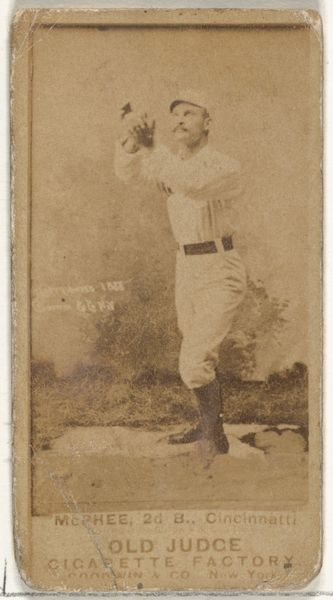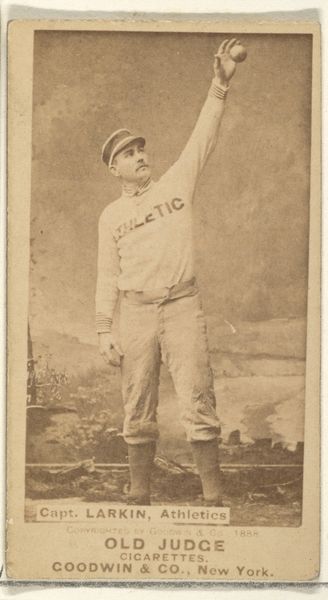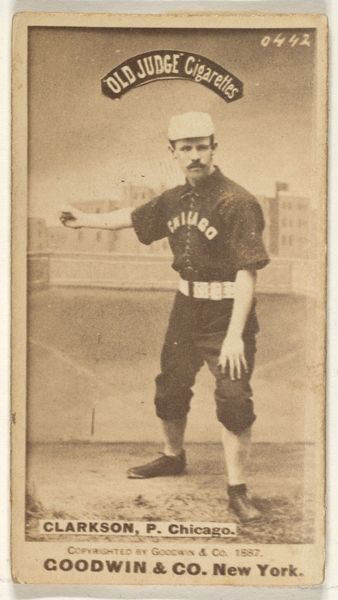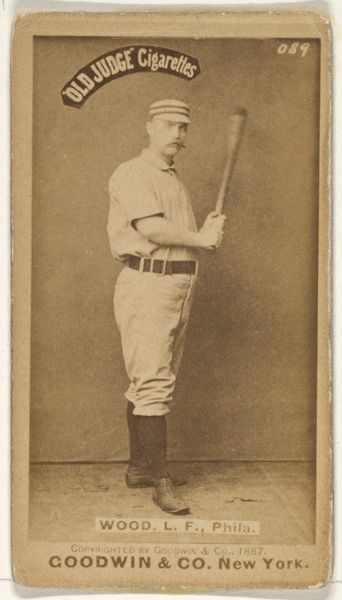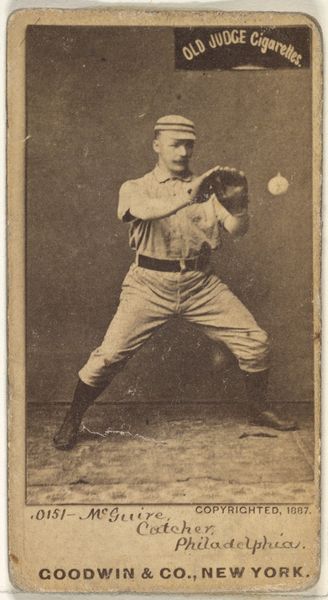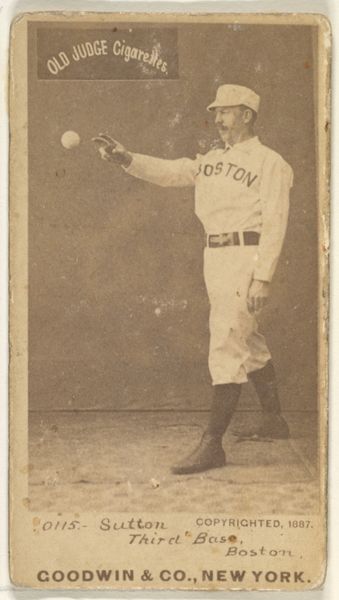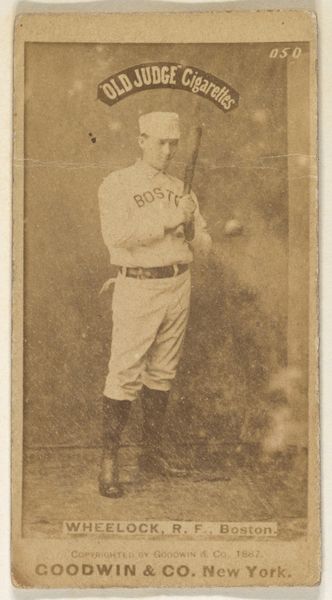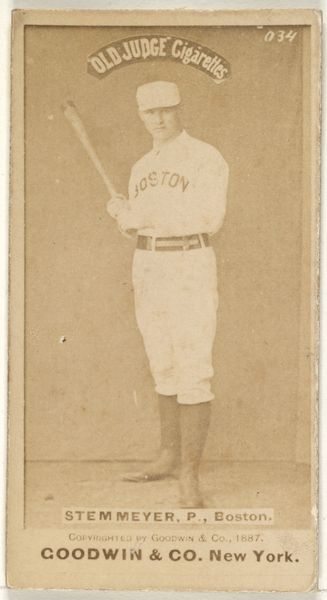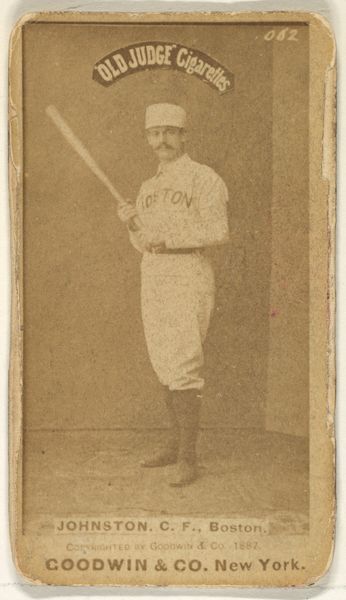
Horning, Left Field, Boston, from the Old Judge series (N172) for Old Judge Cigarettes 1887
0:00
0:00
drawing, print, photography
#
portrait
#
drawing
# print
#
baseball
#
photography
#
genre-painting
Dimensions: sheet: 2 11/16 x 1 3/8 in. (6.9 x 3.5 cm)
Copyright: Public Domain
Curator: So, here we have a baseball card featuring a player named Horning, from the Old Judge Cigarettes series, created around 1887 by Goodwin & Company. It's quite charming. Editor: Immediately, I'm struck by the sepia tone. It throws me back to a time when baseball felt a little more like mythology, players elevated almost to demigods by the limited visibility the medium provided. He's holding a ball, about to make a play – a freeze-frame of heroism in waiting. Curator: I see what you mean. These cards weren't just advertising; they were also a way for fans to connect with their favorite players. Little pieces of their heroes they could collect and trade. And in a pre-internet world, visual connections such as this carried extraordinary significance. Editor: Exactly. This specific sepia tone creates a certain feeling: there's almost a sense of veneration within a snapshot. And placing the brand so visibly reminds us that images—even those promising authenticity—were carefully constructed and tied tightly with commercial considerations. Baseball, tobacco and hero worship! Curator: True! Look closely, and you'll see the drawing-like quality of the portrait is born of printing technology reproducing photographs for mass production. He has that focused look about him—ready for anything coming his way. What stands out to me is the relative lack of the dynamism one finds in many contemporary baseball cards. The player is, after all, standing still! Editor: I find that stillness incredibly evocative. The focus isn't on frenetic action, but rather the poised potential before the leap or throw. He’s holding the story of the next exciting moment, without giving it all away too soon. This reminds us of baseball's long presence in the symbolic vocabulary. This stillness also reminds us of its origins in rituals where symbols outweigh directness. Curator: That's lovely—I think I like him even more, now! To know such ephemera held—and holds—so much emotional depth is quite striking. Editor: Me too. It's really beautiful when commercial needs are fused so completely with powerful human desires for belonging and connection.
Comments
No comments
Be the first to comment and join the conversation on the ultimate creative platform.


